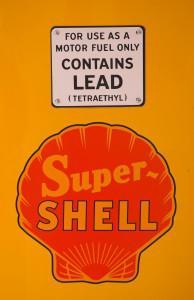 On November 9, the Environmental Protection Agency (EPA) released results on the presence of airborne lead in areas around the country. All but 20 cities in 15 states met the strengthened 2008 standards, which are designed to protect public health and welfare.
On November 9, the Environmental Protection Agency (EPA) released results on the presence of airborne lead in areas around the country. All but 20 cities in 15 states met the strengthened 2008 standards, which are designed to protect public health and welfare.
According to the EPA, the states/territories containing areas labeled as “nonattainment” include Alabama, California, Florida, Illinois, Indiana, Iowa, Kansas, Michigan, Minnesota, Missouri, Ohio, Pennsylvania, Puerto Rico, Tennessee, Texas (click here for specific cities). Under the rules, they will have 18 months to develop plans that contain enforceable measures to reduce lead pollution, and five years to bring the amount of airborne lead below the current standard of .15 micrograms per cubic meter of air. It is unclear as to what sanctions, if any, “nonattainment” areas will face if they cannot comply within the five-year timeframe.
In 2008, the EPA reduced the legal amount of airborne lead from 1.5 micrograms per cubic meter of air to .15 parts. It was the first time since 1978 that the rules had been enhanced. Today, the average amount of airborne lead in the U.S. is 93 percent lower than it was in 1980, which was when the EPA began to phase out leaded gasoline over 15 years (used to boost the octane level).
Even with the significant progress over the past three decades, however, there remain several well-known sources of airborne lead. Chief among them is the use of aviation gasoline, which accounts for 57 percent of airborne lead. Despite being used primarily by small, piston-engine aircraft, it is available at more than 20,000 airports across the nation. Aviation gasoline differs from kerosene-based jet fuel, which does not contain lead. Other significant sources of lead are industrial processes, especially those involving ore, metals, and chemical processing (25 percent). Smaller sources include coal-based power plants and industrial boilers (10 percent).
While some may dismiss reducing the amount of airborne lead by 93 percent and then cutting the legal limit by a factor of ten “excessive regulation” by the EPA, it is important to remember that even small amounts of lead have been shown to impair a child’s IQ, learning abilities, and behavior. Despite the fact that there is no known safe amount of lead to have in one’s body, the EPA states that more than 3 million children live within one kilometer of the 20,000 airports that carry leaded fuel.
Image by Jason

